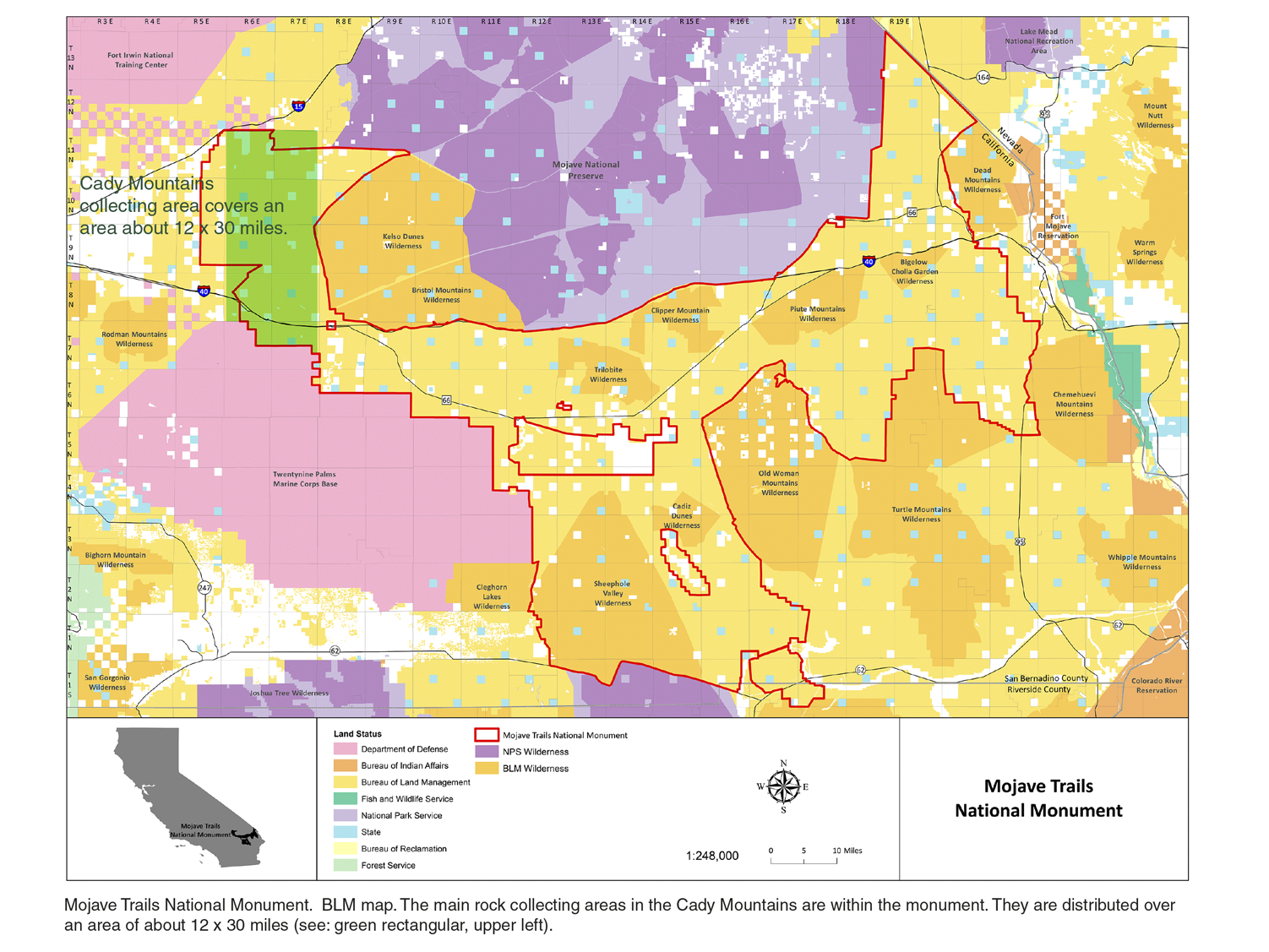DAC meeting report:
Progress and process on managing desert public lands
October 31, 2016
by Lisbet Thoresen
#CalNatMonuments Tweet
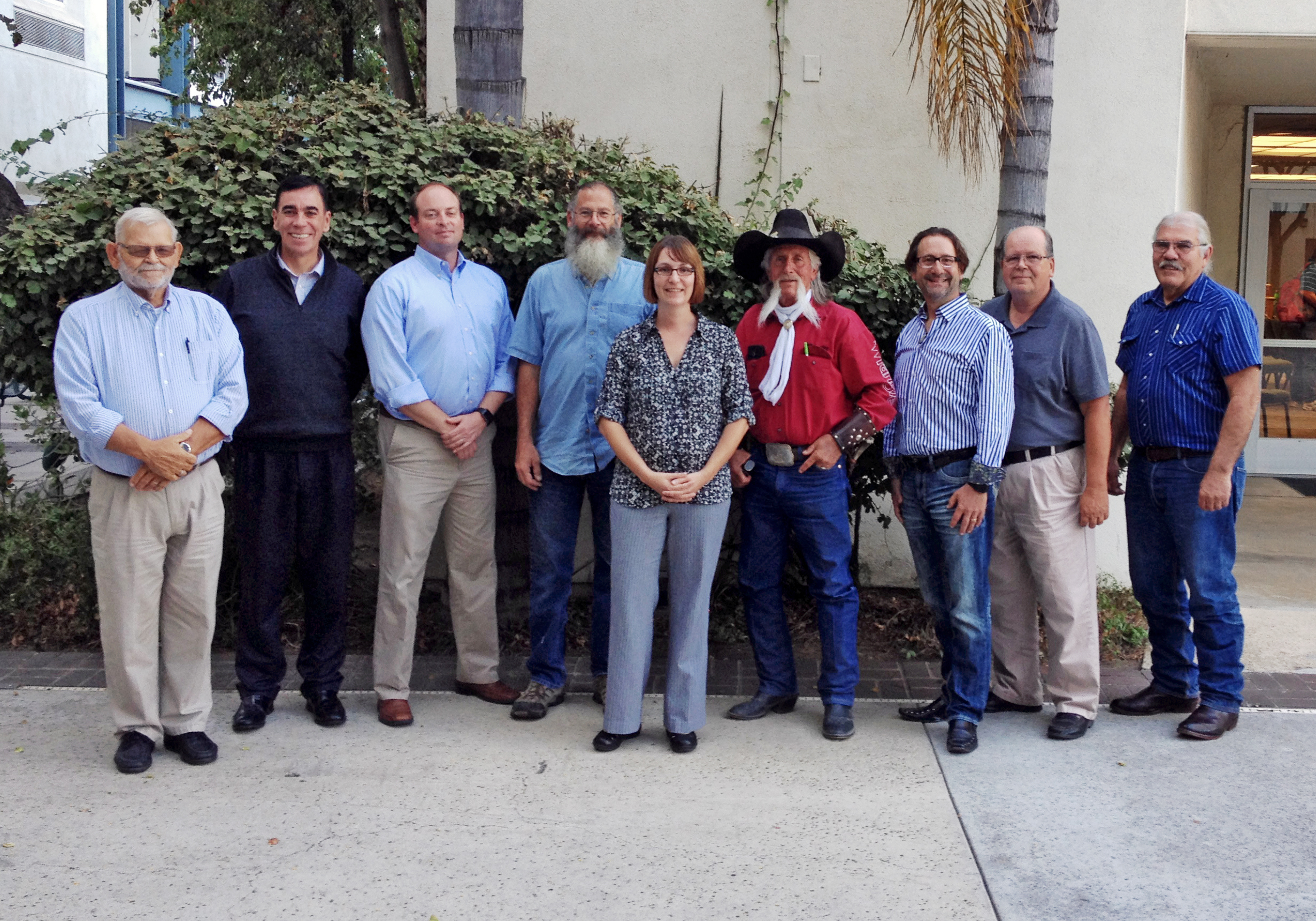
DAC business meeting held on October 15, 2016 at UC Riverside. Left to right: James Kenny, Chair Leslie Barrett, Nathan Francis, Mark Algazy, CDD District Manager Beth Ransel, William "Billy" Mitchell, Randy Banis, Robert Burke, Robert Robinson. Photo: L. Thoresen.
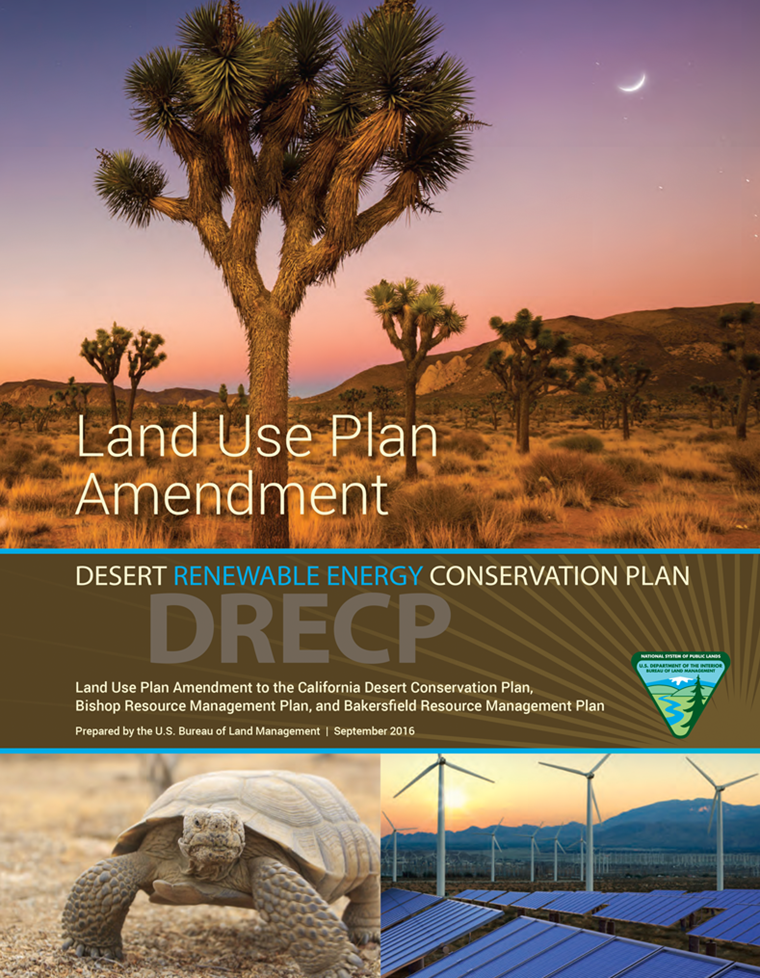

Left: Draft (preferred alternative) DRECP showing Development Focus Areas (DFAs)(magenta-colored areas), where utility-scale renewable energy projects could be built. Right: Final DRECP showing removal of DFAs, some of which were changed to accommodate Rockhounds based on comment letters.
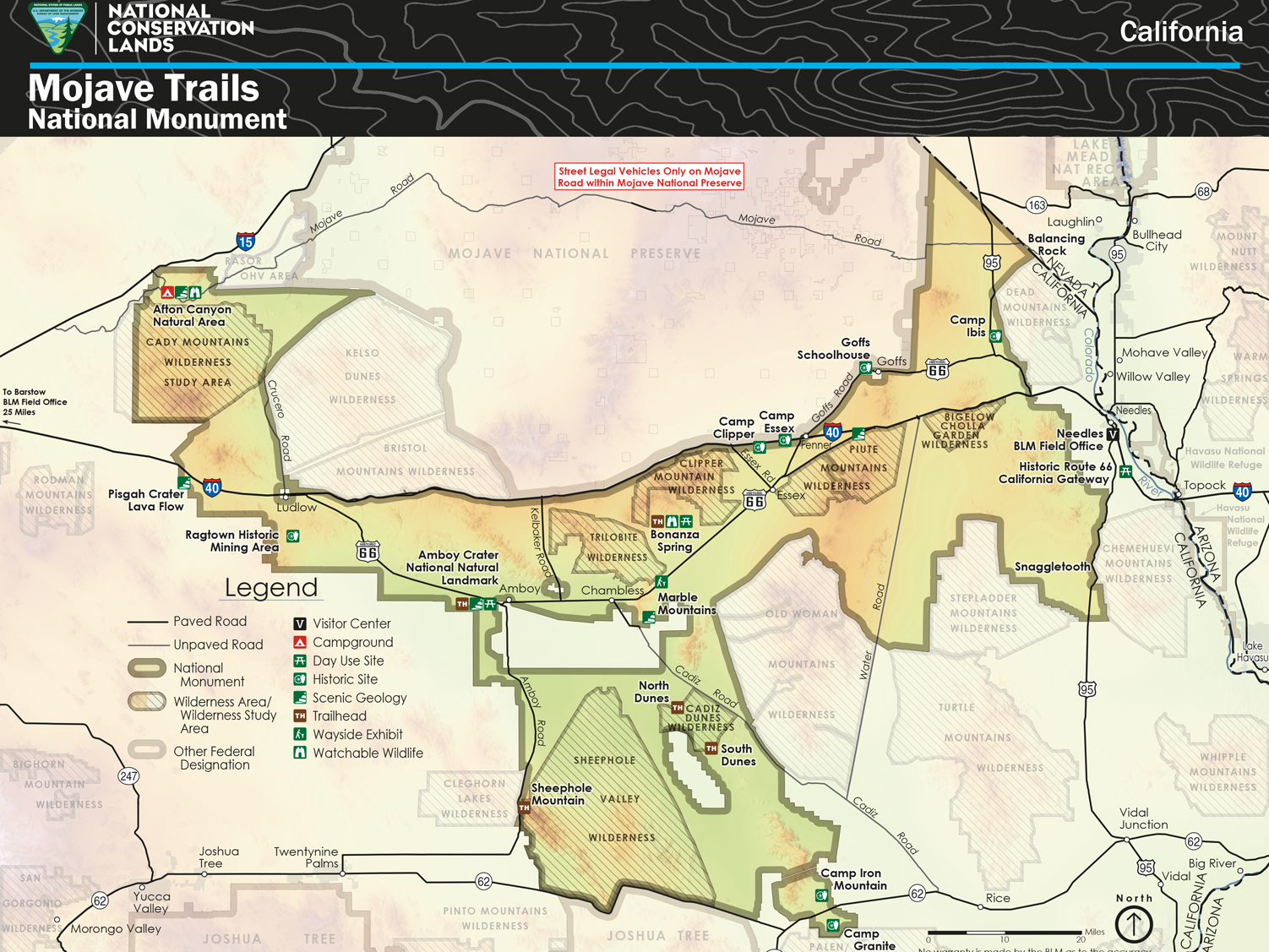
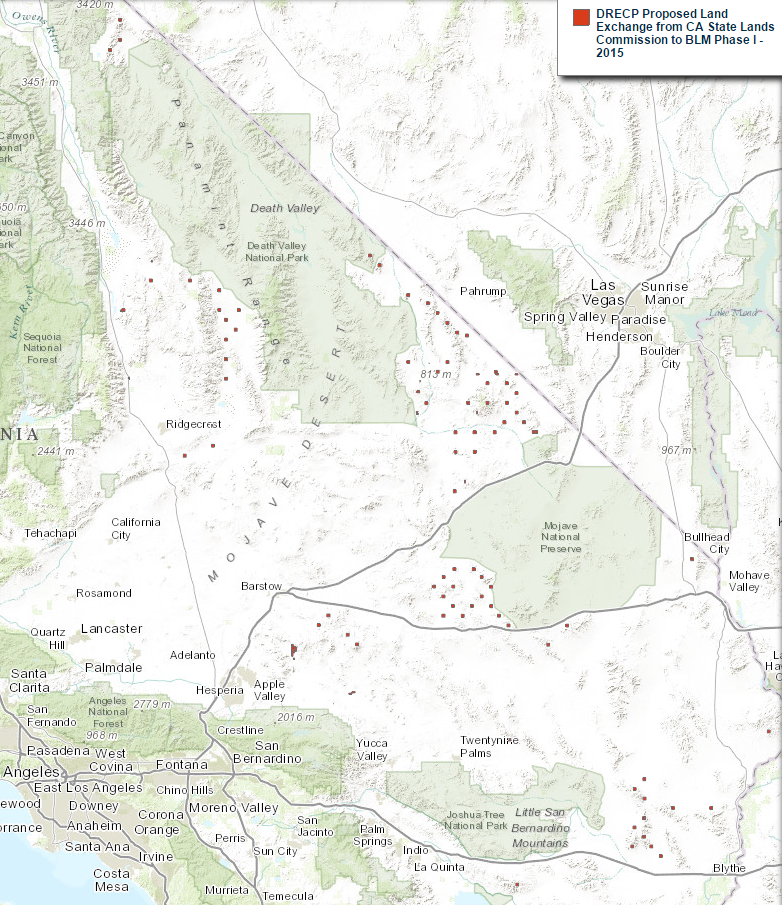
DRECP map from 2015 showing proposed land-exchange sites. Potential conflicts concerning these sites may require reconciliation between different planning efforts such as DRECP and WMRNP. DAC member Randy Banis pointed out that bottlenecks could be created along travelways where they pass through land exchange areas.
The DAC business meeting held in Riverside on October 15th was a full day of good presentations and discussion focused mostly on Phase II (implementation) of the Desert Renewable Energy Conservation Plan (DRECP) and the Management Plan process for the Mojave Trails National Monument (MTNM). It was a productive meeting, so it was a pity so few members of the public were present to provide comments (fewer than 20 total, with perhaps four Rockhound advocates, six if one counts one geologist and one paleontologist who came to petition for access to the Marble Mountains fossil beds). The good news in that, perhaps, was that people who had a lot to say were given the opportunity to visit the podium and speak numerous times. Chair Leslie Barrett graciously disregarded the clock to allow lengthy comments and repeated rejoinders from the public.
(The detailed report of the day's agenda and discussion can be found on the SDMG website at: www.sdmg.org/blmdocs/dac-report-2016-10-15.pdf.)
Several agenda items at the October 15th meeting were directly relevant to Rockhounds. They are summarized below. Among them was a presentation on DRECP by Russell Scofield, BLM Natural Resource Specialist. The Management Plan process for Mojave Trails National Monument was outlined by Mike Ahrens, BLM Field Officer, Needles. The bureaucratic morass of Land Use Plan Amendments (LUPAs) and the processes guiding them are becoming increasingly complicated, with overlaps and conflicting directives. This issue was visited several times throughout the meeting, because it touched on almost every topic and planning effort under discussion.
I. DRECP – Next Steps
Field Officer Scofield has been tasked with overseeing implementation of DRECP with the local counties. He is currently working on the First 100 Days Plan – the start date was signing of the Record of Decision, Sept 14, 2016. The First 100 Days Plan is a schedule of actionable items, then priorities, budget, and scoping. He wants to reach out to special interest groups (Stakeholders) as part of his commitment to public engagement. After his presentation, several Rockhound advocates self-identified as Stakeholders, and we welcomed dialogue with him. We spoke about the significance of Mojave Trails to Rockhounds and the importance of accommodations for collecting being written into the Management Plan.
The next DAC business meeting is tentatively scheduled for February 2017. A good turnout of Rockhounds would make a strong impression on Mr. Scofield, who by that date, will be have completed his First 100 Days Plan. Look for DAC meeting details to be posted on the BLM website at: www.blm.gov/ca/st/en/info/rac/dac.html (and SDMG website) in early February. Coming to the DAC meetings – strength of numbers – enhances the credibility of the Rockhound community as a committed Stakeholder. It shows BLM that we are serious. Let's make a good first impression with Mr. Scofield and reciprocate his gesture of inclusiveness by showing up at the next DAC meeting.
II. MTNM – Management Plan
BLM FO Mike Ahrens (Needles) presented an outline of the Management Plan process. While it was not explicitly stated, it seems apparent that BLM is intent on completing a Final Plan for the monument within the three-year window allowed by law (the clock started running down on February 12, 2016). Between Mr. Ahrens and Mr. Scofield, BLM is committed to engaging public input during the Plan drafting process. The presentation made by Mr. Ahrens stimulated lively discussion and elicited many comments from the public. Rockhound advocates took the opportunity to log into the record the values and concerns our community attaches to MTNM. It is the second largest monument in the system, so given its size and the number of collecting areas within its footprint, I asked BLM to set a comment period of reasonable duration (more than 60 days).
I asked BLM to accept the authority of mindat.org URL's with locality titles/descriptors in comment letters from Rockhounds. Stephen Razo confirmed that appending a list of sites with URLs would be acceptable, but with the caveat that the body of the letter should contain a few localities with details that exemplify the quality of information given in mindat.org. BLM also agreed to accept GIS-compatible files (e.g. kml) as attachments for site locations – BLM is willing to import the location layers into its existing digital route maps. If Rockhounds can provide site coordinates, we are alleviated of the burden of also having to provide route information in our comment letters. If you are GIS-challenged, don't worry, you can forward your site locations to Lisbet Thoresen, and she will get them into the BLM-approved format.
DAC member Mark Algazy referred to recreational Rockhounding as "Mining," which prompted me to point out that the term "Mining" should not be used interchangeably with Rockhounding or rock collecting, because the activities have different environmental impacts. Recreational activity should not be conflated with Mining as being substantially the same, and therefore subject to the same proscriptions or regulatory constraints.
This is not a trivial point. We will be hearing more about Disturbance Caps (DCs), which is a measure of the intrusion or harm imposed by human activity on the environment. BLM FO Katrina Symons (Barstow) is curently preparing a Disturbance baseline study, which will be released in May-June, 2017. DCs will be calculated for all the different activities in the desert, and they accrue cumulatively against the activity overall. DCs are not segregated and measured as locality-specific impacts.
Clearly, Rockhounds stand to lose a lot, if our DCs are lumped together with commercial mining. It should also be apparent that high disturbance measured in a single area can skew the overall scoring or cap. That scoring will redound to all collecting areas in aggregate. It will make no difference in terms of access that one area is measured lower than another area.
III. Untangling a confusing array of
LUPA directives, processes, and implementation
A variety of programmatic and administrative planning efforts have a role in managing desert public lands. They are all supposed to comport with the Federal Land Policy and Management Act (FLPMA), which just passed its 40th anniversary and whose intent is to balance multiple uses with "sustained yield" (stimulate development of economic opportunities that benefit local communities). However, DRECP and West Mojave Route Network Project (WMRNP), in particular, have guidelines or processes that conflict with FLPMA and not infrequently with one another. Indeed, DRECP has internal inconsistencies within itself.
Concerns over conflicts between them were pointed out repeatedly by DAC members and the public. So, part of the meeting was spent grappling with how best to address the inconsistencies and conflicts, not compound them going forward, and keep them better aligned with the spirit of FLPMA.
A motion passed to create a Sub-Group which will engage public participation on implementation of DRECP vis-à-vis MTNM. (Some of the discussion and public comments on this subject are found in my October 2016 DAC report.)
The same concerns were voiced over Planning 2.0. This initiative is designed to unify land use policy into a coherent master Framework. It will remove decision-making on land use policy from local counties to the Federal level. The driving impetus is to spur renewable energy projects and build a power grid to deliver electricity to load centers across state lines. Recreation (Rockhounds, that's us) and other Stakeholders (including tribal interests, environmentalists, etc.) are far down the priority list after renewable energy development. Because Planning 2.0 is under development currently, it is something of a black box, but experienced observers anticipate still more egregious conflicts looming between Planning 2.0 and FLPMA. Prompted by public comments, BLM will schedule a DAC meeting presentation in the near future, the working title is "Planning 2.0 for Dummies."
Friendly climate for Rockhounds
I stepped up to the podium perhaps five or six times to respond to points raised by DAC members or BLM presenters at the October meeting. Whenever comments about amateur Rockhounding were made, there were follow-on comments of support from DAC members, BLM field officers, and from other attendees. For constructive comments entered into the record on behalf of Rockhounds, special thanks to DAC Chair Leslie Barrett, members-at-large Mark Algazy and Randy Banis, John Stewart (Blue Ribbon Coalition, California Four-Wheel Drive Association), and Gerry Hillier (Federal Lands consultant to San Bernardino County). Thanks also to BLM FO Katrina Symons, Barstow, and FO Mike Ahrens, Needles, who offered excellent suggestions on resources to help us draft an effective comment letter for MTNM.
A PDF version of this article appears in the SDMG's November 2016 bulletin (short URL: https://goo.gl/QQh9gb).
Cite this article: L. Thoresen. 31 October 2016. DAC meeting report: Progress and process on managing desert public lands. San Diego Mineral & Gem Society, Inc. Available online at: https://www.sdmg.org/articles/201610/oct-2016-dac-mtg-report/.
This article is updated from the original version posted on October 27th.
When you tweet this article, use the hashtag #CalNatMonuments. Tweet

